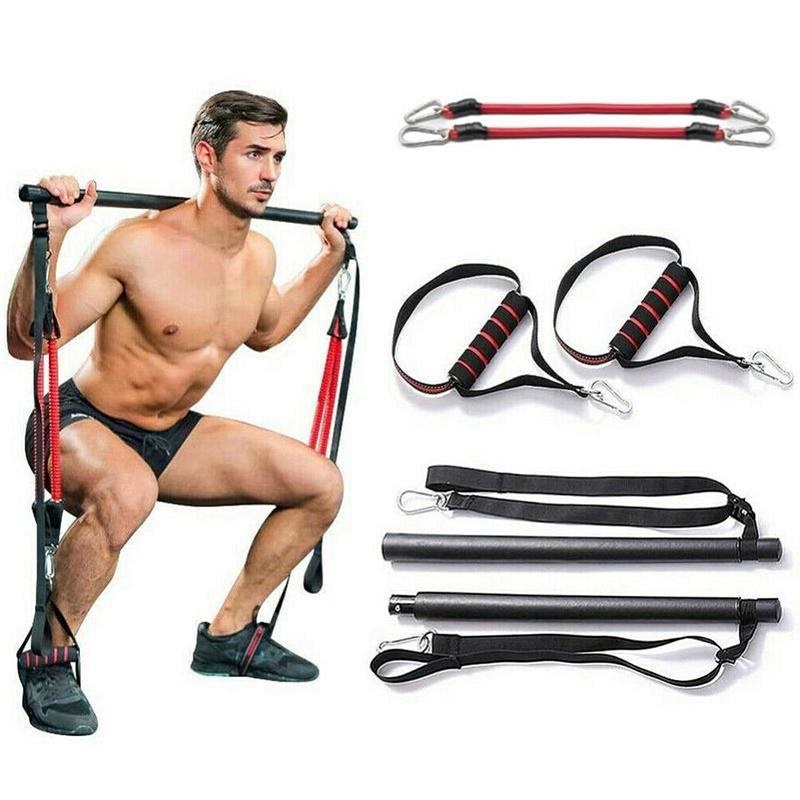Last Updated on: 18th December 2024, 12:32 pm
Calisthenics is a form of exercise that uses body weight for resistance training. It focuses on improving strength, flexibility, and endurance without the need for equipment. This guide will help beginners understand the basics and progressions of calisthenics.
- Benefits of Calisthenics: Enhances cardiovascular health, flexibility, endurance, and strength.
- Accessibility: Can be performed anywhere, making it a convenient fitness option.
This article provides a step-by-step guide for beginners to start calisthenics, focusing on fundamental exercises and progressions to improve physical health and strength.
Understanding the Fundamentals

The Importance of Mastering Basic Movements
Basic movements like push-ups, pull-ups, and squats are essential in calisthenics. Mastering these ensures a strong foundation, reduces injury risk, and enhances workout effectiveness.
Key Principles of Form and Technique
- Form: Ensures targeted muscle engagement and prevents strain.
- Technique: Proper alignment and positioning enhance workout efficiency and prevent injuries.
The Role of Consistency and Patience in Progress
Consistency and patience are crucial for progress in calisthenics. Regular practice and allowing time for the body to adapt are key to building strength and achieving goals.
Essential Calisthenics Exercises for Beginners

Push-ups: Variations and Progressions
- Begin with wall push-ups, progress to knee push-ups, and then to standard push-ups.
- Vary hand positions to target different muscles.
Pull-ups and Chin-ups: Building up to Your First Rep
- Start with negative pull-ups to build strength.
- Use resistance bands for assistance.
Squats: Foundation of Lower Body Strength
- Start with bodyweight squats, ensuring proper form.
- Progress to jump squats or single-leg squats.
Planks: Core Strengthening Basics
- Begin with forearm planks, maintaining a straight line.
- Increase hold time and try side planks.
Designing Your First Calisthenics Routine

Setting Realistic Goals and Expectations
Set achievable goals like mastering a pull-up or holding a plank for a minute. These goals guide your progress and keep you motivated.
Structuring a Balanced Workout
- Frequency: Start with three workouts per week.
- Intensity: Increase complexity and effort gradually.
- Volume: Gradually increase repetitions and sets.
Incorporating Rest and Recovery
Rest days are essential for muscle recovery. Include at least one rest day between sessions and focus on hydration, nutrition, and sleep. Light activities like stretching can aid recovery.
Progressing in Calisthenics: Overcoming Plateaus

Recognizing Signs of a Plateau
Plateaus occur when progress stalls. Signs include difficulty increasing reps or advancing exercises. Recognize these early to adjust your training.
Strategies for Continuous Improvement
To overcome plateaus, increase exercise intensity and volume. Add weight or more sets and reps. Try advanced variations like archer push-ups or muscle-ups.
The Importance of Diversifying Your Routine
Diversify your routine to prevent adaptation and plateaus. Incorporate various exercises and fitness disciplines to keep workouts engaging and effective.
Overcoming plateaus requires recognizing stagnation, increasing workout intensity, and diversifying exercises. These strategies ensure continuous improvement.
Nutrition and Recovery for Calisthenics Athletes

Nutrition: The Muscle Building and Recovery Catalyst
Proper nutrition supports muscle building and recovery.
- Proteins: Essential for muscle repair. Include lean meats, legumes, and dairy.
- Carbohydrates: Replenish energy. Include whole grains and vegetables.
- Fats: Important for hormone production. Include avocados and nuts.
Hydration: The Unsung Hero of Peak Performance
Hydration is crucial for performance.
- Water regulates body temperature and lubricates joints.
- Stay hydrated for better endurance and reduced fatigue.
- Ensure hydration before, during, and after workouts.
Sleep and Rest: The Foundation of Recovery
Sleep is vital for recovery.
- Aim for 7-9 hours of sleep per night.
- Rest days allow muscles to rebuild.
- Use downtime for growth and rejuvenation.
Integrating nutrition, hydration, and rest enhances performance and accelerates progress in calisthenics.
Building a Supportive Community and Staying Motivated

Finding and Engaging with Calisthenics Communities
Joining a calisthenics community can enhance your experience.
- Online forums and local groups offer resources and motivation.
- Share successes and challenges for collective progress.
The Benefits of Having a Workout Partner or Coach
A workout partner or coach can boost your progress.
- They provide accountability and feedback.
- Encouragement helps achieve milestones.
Setting New Goals and Celebrating Achievements
Goal setting maintains motivation.
- Start with attainable targets and increase difficulty.
- Celebrate achievements to reinforce commitment.
Building a community, engaging with a partner or coach, and setting goals are key to staying motivated in calisthenics.
Summing Up
Calisthenics offers a path to physical and mental growth. By mastering fundamentals and overcoming challenges, you can achieve strength and confidence. Embrace consistency, technique, and community support for continuous improvement.

